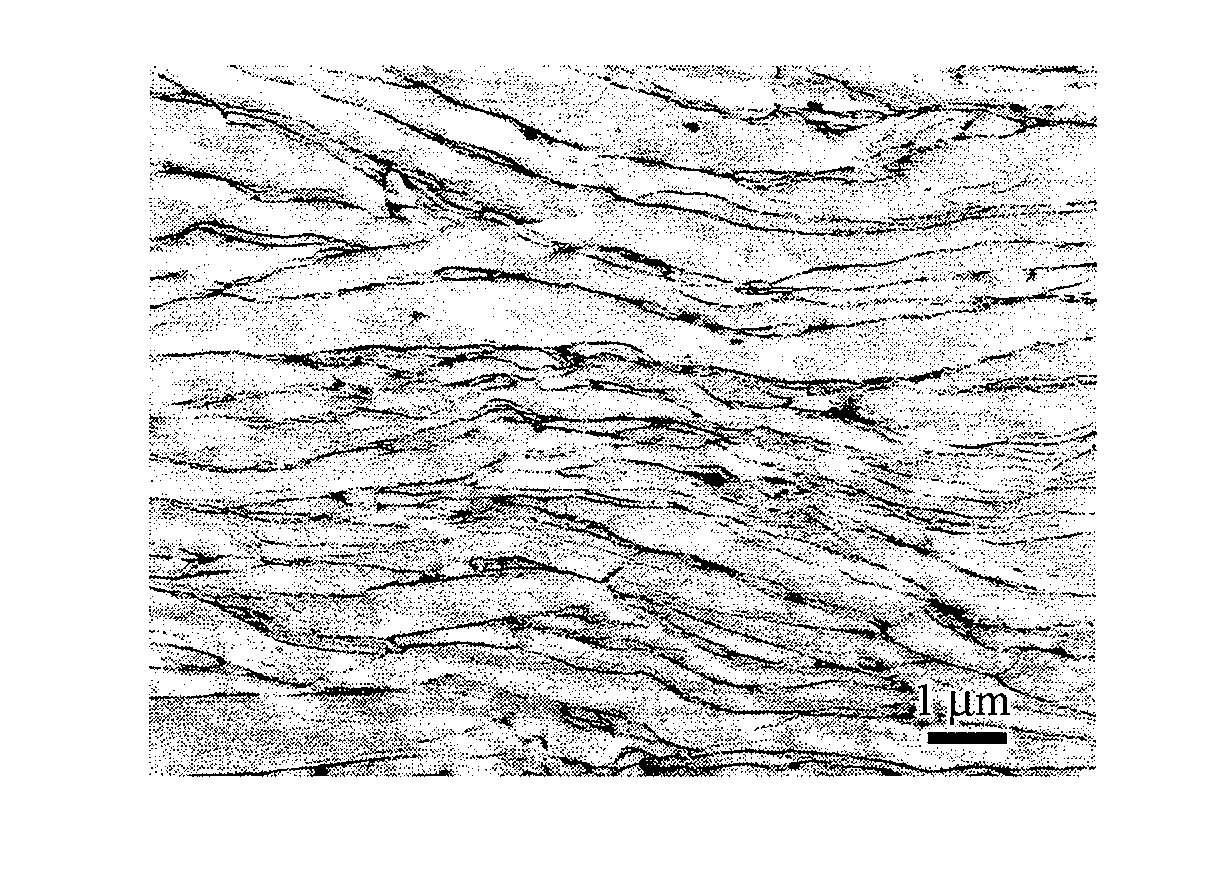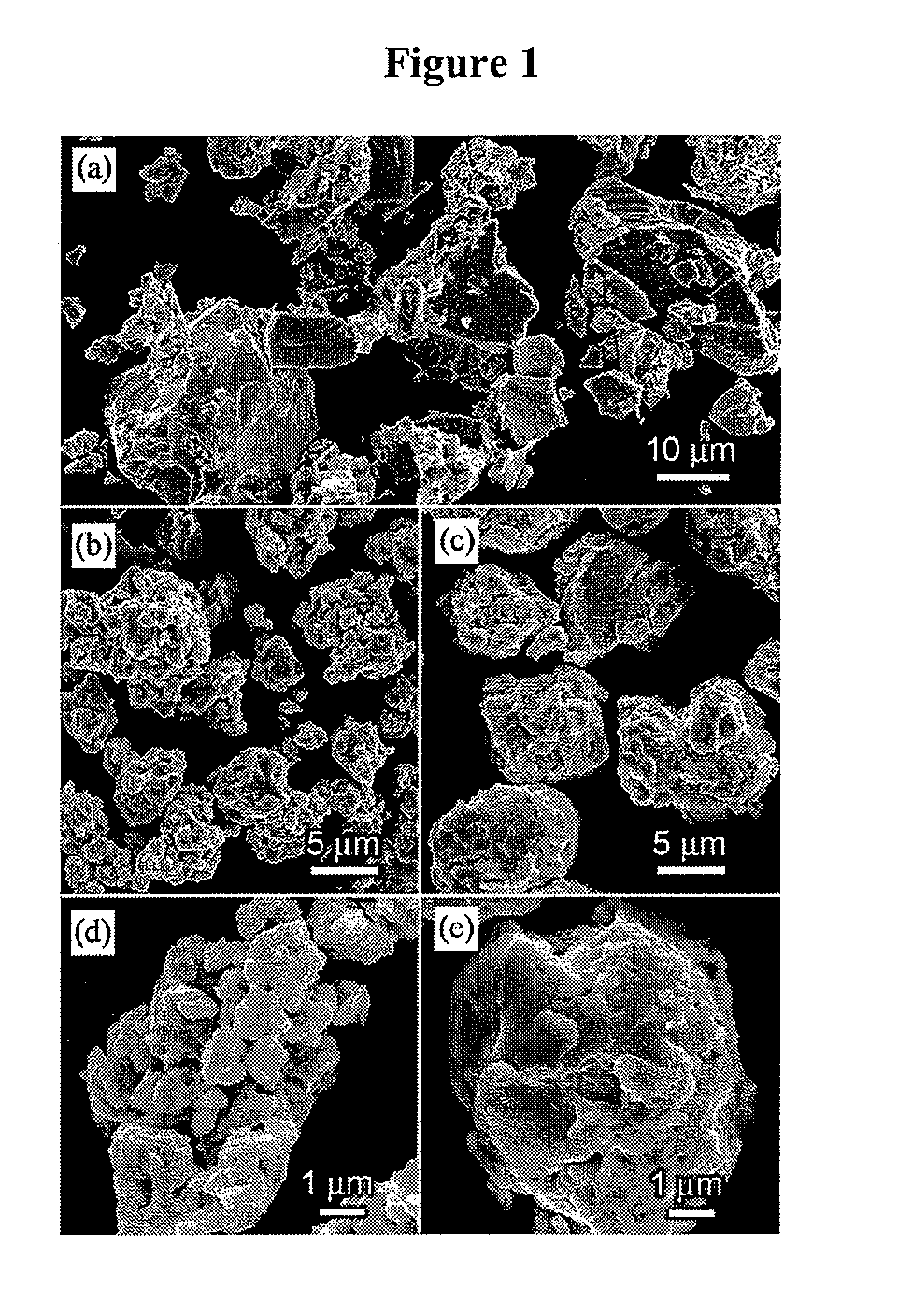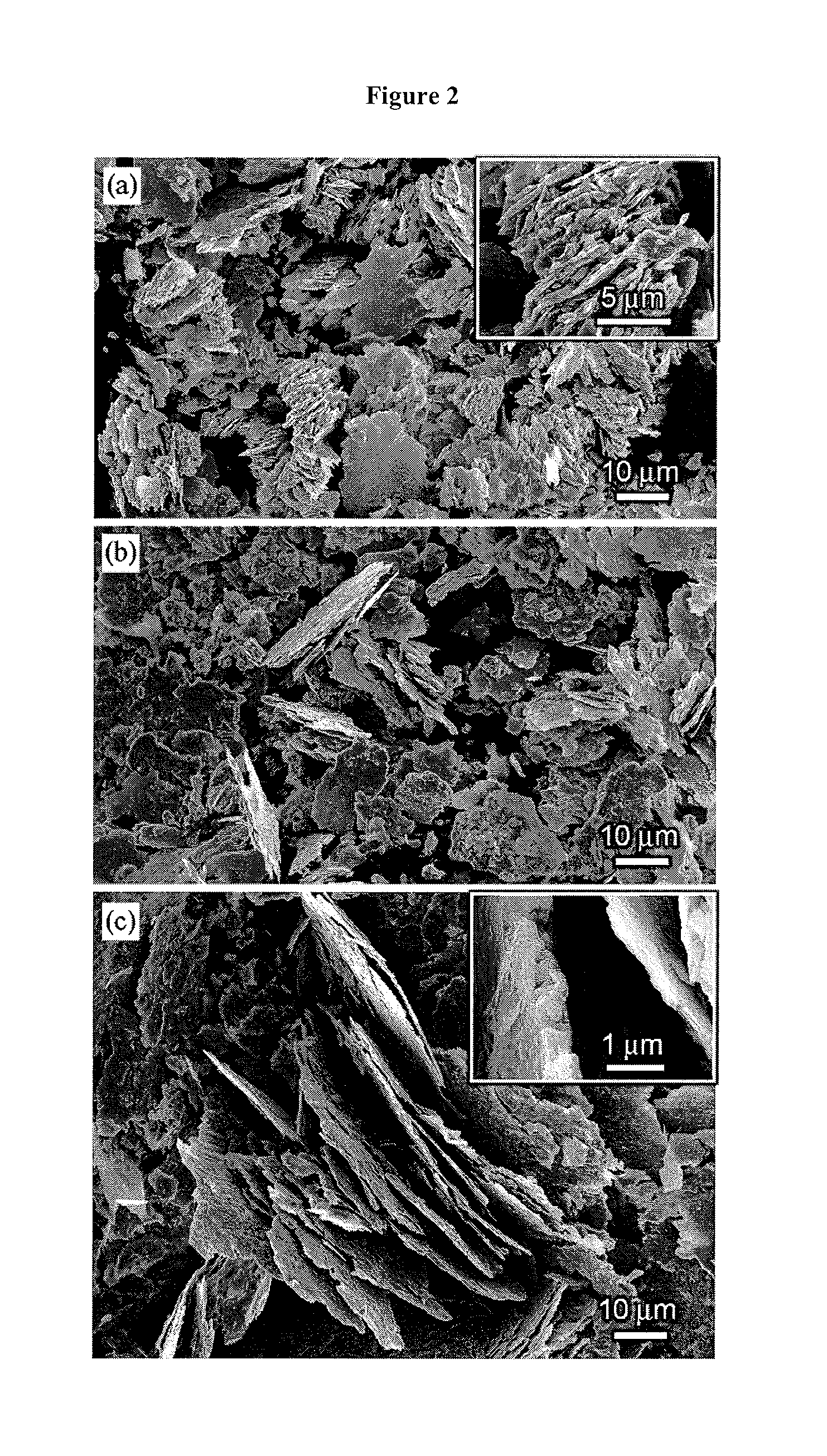Magnets made from nanoflake precursors
- Summary
- Abstract
- Description
- Claims
- Application Information
AI Technical Summary
Benefits of technology
Problems solved by technology
Method used
Image
Examples
examples
[0156]The present invention is further described and illustrated by Examples 1 through 11 set forth below and detailed in FIGS. 1 through 21 of the Drawings.
examples 1 and 2
Introduction to Examples 1 and 2
[0157]Examples 1 and 2 are further illustrated in FIGS. 1 through 3 of the drawings. In examples 1 and 2, brittle SmCo5 alloys were subjected to successive dry and wet high energy ball milling in the presence of a surfactant. Surprisingly, the evolution of nanoflakes-shaped particles from these nominally brittle alloys which were wet-milled after prolonged dry milling indicated malleability similar to that of ductile materials. This malleability / ductility induced by nanostructure is particularly unexpected. For example, SmCo5 crushed ingots subjected to high energy ball-milling in heptane without surfactant transformed into rather equiaxed particles.
[0158]Alloys with the nominal composition Sm17Co83 (in at. %) which corresponds to SmCo5 formula, were prepared from pure components by arc-melting. In order to offset oxidation of the RE during milling, the SmCo5 alloys were made with 2 extra at. % (relative) of Sm to compensate for the evaporation loss o...
example 1
[0160]The first example describes the evolution of SmCo5 particles through dry, in Ar, high energy ball milling, which is the first step, prior to wet, surfactant assisted high energy ball-milling, in the fabrication of SmCo5 nanoflakes of the invention. During the dry high energy ball milling, the SmCo5 powders reveal a very rapid decline of the average particle size in the first minutes of the milling, as the cast material breaks up. Powders dry-milled for 1 min. are shown in FIG. 1(a); they consist mostly of non-agglomerated particles 1 to 30 μm in size with characteristically polygonal shapes and sharp edges. After 5 min. of milling, only few separate particles with these features can still be found, as the smallest particles are being increasingly coalesced with each other and with the bigger particles. As shown in FIG. 1(b) & (d), the newly assembled particles (agglomerates) appear “loose” and their size varies broadly from few microns to tens of microns. After prolonged milli...
PUM
| Property | Measurement | Unit |
|---|---|---|
| Time | aaaaa | aaaaa |
| Percent by atom | aaaaa | aaaaa |
| Metallic bond | aaaaa | aaaaa |
Abstract
Description
Claims
Application Information
 Login to View More
Login to View More - R&D
- Intellectual Property
- Life Sciences
- Materials
- Tech Scout
- Unparalleled Data Quality
- Higher Quality Content
- 60% Fewer Hallucinations
Browse by: Latest US Patents, China's latest patents, Technical Efficacy Thesaurus, Application Domain, Technology Topic, Popular Technical Reports.
© 2025 PatSnap. All rights reserved.Legal|Privacy policy|Modern Slavery Act Transparency Statement|Sitemap|About US| Contact US: help@patsnap.com



